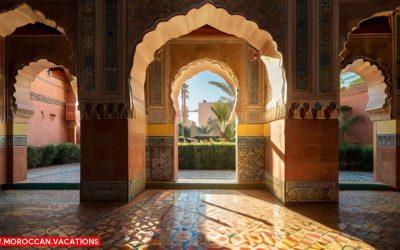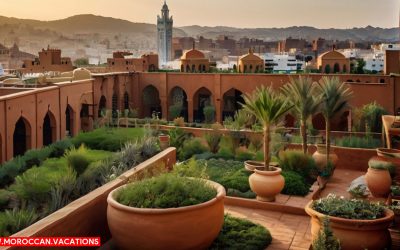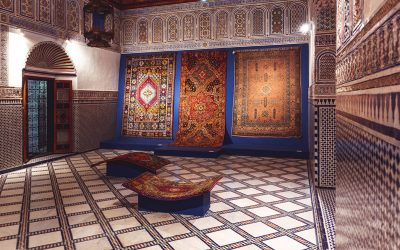Historical Significance of Marrakesh’s Palaces
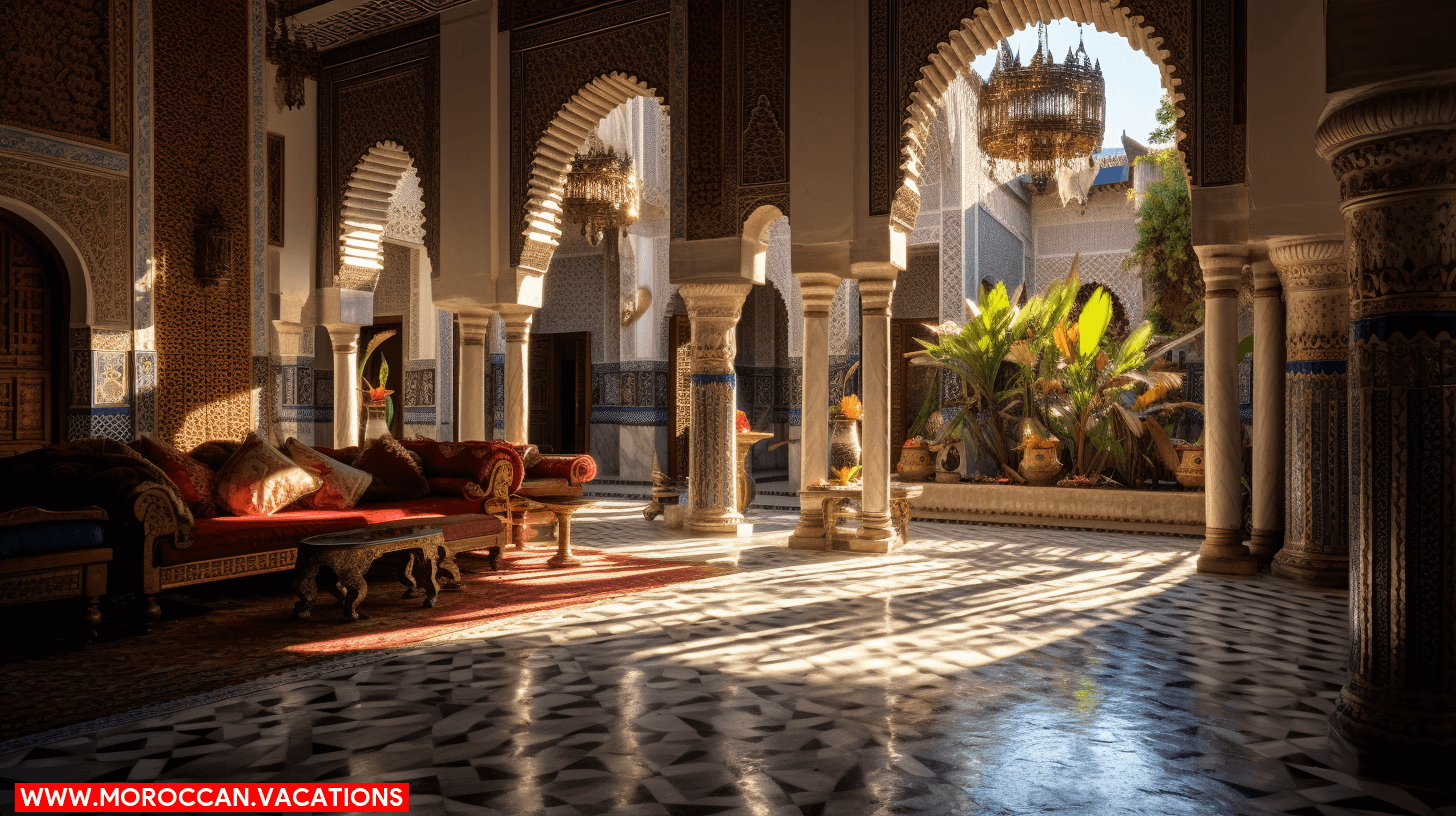

Are you ready to embark on a journey through time and witness the remarkable transformation of Marrakesh‘s palaces? From the reign of dynasties to the opulent world of luxury hotels, these architectural gems have stood the test of time. Immerse yourself in the rich history and culture as we explore the influences of Islamic art, the preservation efforts, and the impact on the tourism industry. Get ready to indulge in the amenities and services fit for the discerning traveler. It’s time to experience the evolution of Marrakesh’s palaces firsthand.
The historical significance of Marrakesh’s palaces lies in their role as architectural marvels that have withstood the test of time, serving as a testament to the grandeur and opulence of the dynasties that once ruled over this vibrant city. These palaces not only showcase the rich cultural heritage of Marrakesh but also have had a profound influence on Moroccan cuisine and a significant impact on the local economy.
The palaces of Marrakesh, such as the Bahia Palace and the El Badi Palace, were once the residences of powerful rulers and their families. They were built using traditional Moroccan architectural techniques, featuring intricate tilework, ornate carvings, and lush gardens. These palaces were not only symbols of the dynasties’ wealth and power but also served as centers of artistic and intellectual activities.
The influence of Marrakesh’s palaces on Moroccan cuisine cannot be overstated. The rulers’ lavish lifestyles brought about a culinary revolution, with chefs experimenting with new flavors and techniques to satisfy their sophisticated palates. Many traditional Moroccan dishes, such as tagines and couscous, have their roots in the royal kitchens of Marrakesh’s palaces. Today, the city’s culinary scene continues to thrive, attracting tourists from around the world who come to savor the unique flavors and spices that originated in these opulent palaces.
Furthermore, the palaces of Marrakesh have had a significant impact on the local economy. As the city grew in popularity as a tourist destination, many of these historic palaces were transformed into luxury hotels, attracting high-end travelers and generating revenue for the local community. The restoration and preservation of these palaces have also provided employment opportunities for local artisans and craftsmen, ensuring the continuation of traditional craftsmanship and skills.
Architecture and Design Transformations
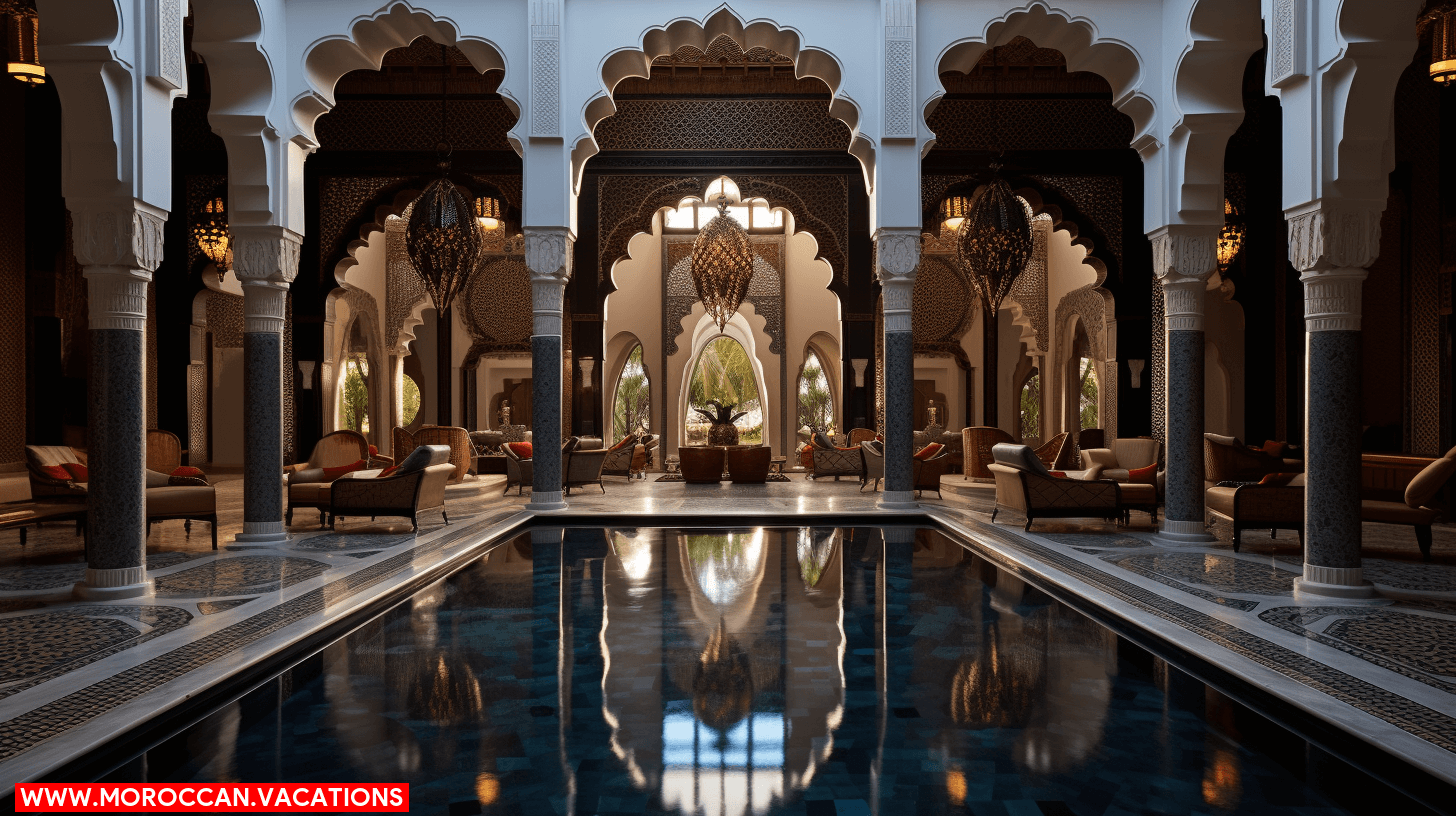

Embrace the transformative journey of Marrakesh’s palaces as they evolve in architecture and design. These magnificent structures have witnessed a fusion of architectural influences and contemporary adaptations over the years, resulting in a unique and captivating aesthetic. Here are five key elements that exemplify the architectural and design transformations in Marrakesh’s palaces:
- Intricate Geometric Patterns: The exquisite tilework and plaster carvings showcase the mastery of geometric patterns, drawn from Islamic and Moroccan design traditions. These intricate details adorn the walls, ceilings, and arches, creating a mesmerizing visual experience.
- Courtyards and Gardens: Marrakesh’s palaces boast beautiful courtyards and gardens, inspired by the concept of paradise in Islamic architecture. These serene spaces feature lush greenery, fountains, and tranquil pools, providing a peaceful escape from the bustling city.
- Merging Traditional and Modern Elements: Many palaces have undergone renovations that preserve their historical charm while incorporating modern amenities. Traditional elements such as ornate doorways and handcrafted furniture are seamlessly blended with contemporary comforts, creating a harmonious balance.
- Rooftop Terraces: The rooftop terraces offer breathtaking views of the city’s skyline and surrounding landscapes. These elevated spaces have been transformed into luxurious lounges and dining areas, where guests can bask in the beauty of Marrakesh while enjoying the comforts of modern design.
- Integration of Natural Materials: Marrakesh’s palaces showcase a profound appreciation for natural materials such as marble, wood, and local stone. These materials are not only visually appealing but also serve to create a sense of authenticity and connection to the surrounding environment.
The architectural and design transformations in Marrakesh’s palaces reflect a desire to preserve the city’s rich heritage while embracing contemporary aesthetics. Each palace tells a unique story, blending the past with the present to create an unforgettable experience for visitors seeking freedom and cultural exploration.
Influence of Islamic Art and Culture
As you delve into the influence of Islamic art and culture in Marrakesh’s palaces, you’ll discover a rich tapestry of traditions seamlessly woven into the architectural marvels. Islamic art influences can be seen in the intricate geometric patterns, calligraphy, and arabesque designs that adorn the palaces. These elements not only serve as decorative motifs but also hold deep symbolic meanings, reflecting the spiritual beliefs and cultural heritage of the Islamic world.
Marrakesh’s palaces have become a hub for cultural tourism, attracting visitors from around the globe who are fascinated by the beauty and historical significance of Islamic art. The city’s palaces, such as the Bahia Palace and the Saadian Tombs, offer a glimpse into the opulent lifestyles of the past rulers, while also showcasing the artistic achievements of Islamic civilization.
Islamic art, with its emphasis on geometry and intricate ornamentation, creates a sense of harmony and tranquility within the palaces. The use of vibrant colors, elaborate tilework, and delicate carvings adds to the visual splendor, transporting visitors to a world of elegance and refinement.
The influence of Islamic art and culture in Marrakesh’s palaces goes beyond aesthetics. It serves as a reminder of the city’s rich history and cultural diversity, promoting a sense of pride and identity among the local population. Moreover, it fosters intercultural dialogue and understanding, as visitors from different backgrounds come together to appreciate and learn from the artistic traditions of the Islamic world. Cultural tourism in Marrakesh has thus become a powerful tool for promoting cross-cultural exchange and appreciation of the beauty and significance of Islamic art.
Palaces as Cultural Heritage Sites
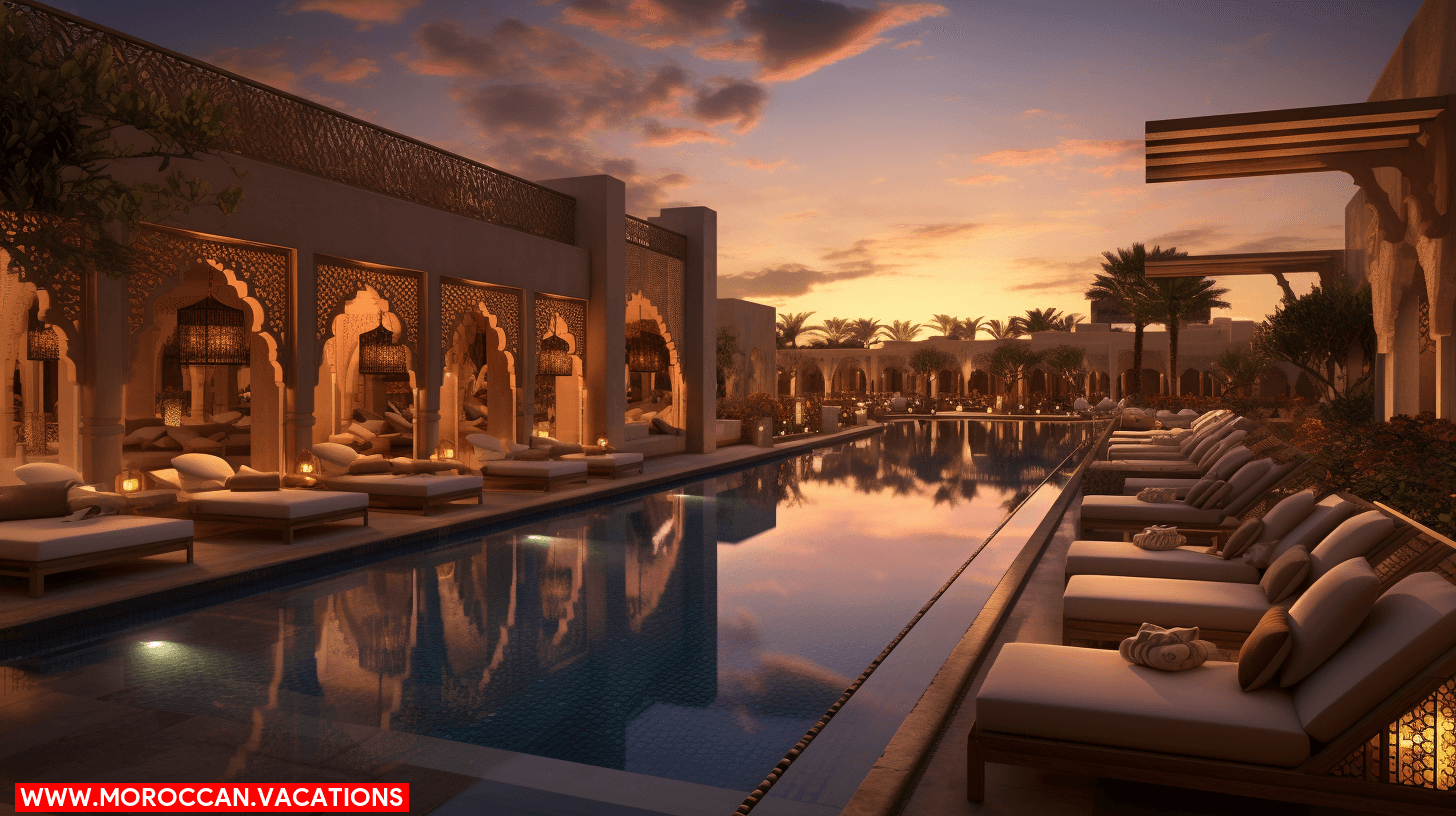

You’ll now explore the significance of Marrakesh’s palaces as cultural heritage sites, immersing yourself in their historical importance and preservation efforts. Marrakesh’s palaces are not just architectural wonders; they are living testaments to centuries of rich history and culture. Here are five key aspects that make these palaces such important cultural heritage sites:
- Architectural Splendor: Marrakesh’s palaces showcase exquisite craftsmanship and intricate designs, reflecting the skills and artistic sensibilities of the past dynasties. From the ornate tilework to the delicately carved wooden ceilings, every detail is a testament to the city’s cultural heritage.
- Historical Significance: These palaces have witnessed the rise and fall of dynasties, the ebb and flow of power. They have been witness to important historical events, shaping the identity of the city. Exploring them allows you to step back in time and connect with the past.
- Preservation Challenges: Preserving these palaces is no easy task. Time, weather, and neglect have taken their toll. Restoration efforts face constant challenges, involving experts who strive to maintain the authenticity of these structures while ensuring their longevity.
- Cultural Identity: The palaces of Marrakesh are not just buildings; they are a part of the city’s cultural identity. They serve as reminders of a glorious past and help connect the present generation with their roots.
- Economic Benefits: The preservation and promotion of these palaces as cultural heritage sites also bring economic benefits to the region. They attract tourists from all over the world, stimulating the local economy and providing employment opportunities.
Marrakesh’s palaces, with their historical significance, preservation challenges, and economic benefits, are not just architectural marvels but also invaluable cultural heritage sites. Exploring these palaces allows you to delve into the past and appreciate the beauty and heritage that they represent.
Transition From Royal Residences to Hotels
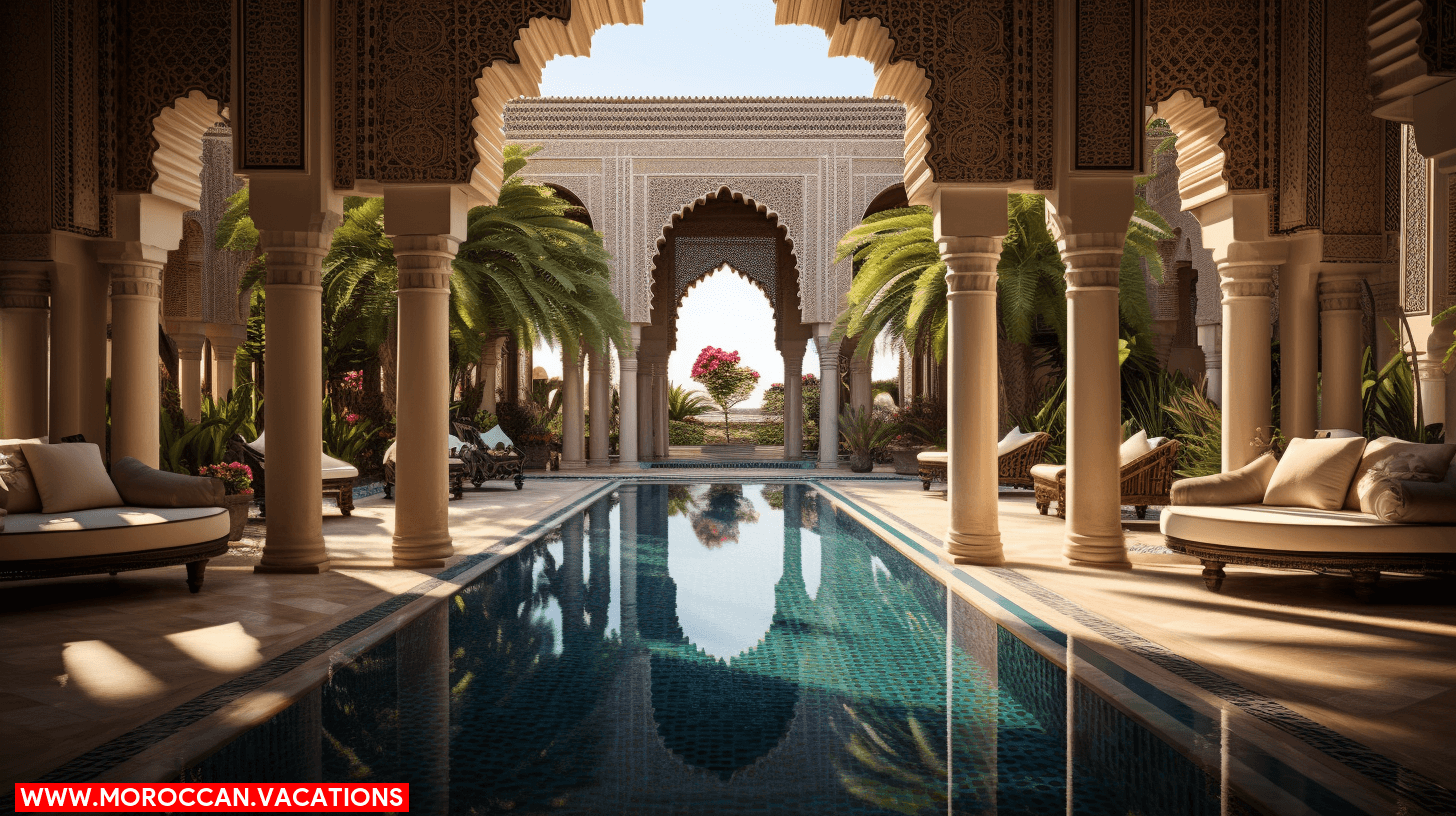

The transition from royal residences to hotels has transformed Marrakesh’s palaces into luxurious accommodations for visitors from around the world. This transition has not only provided economic benefits for the city but has also had a significant socio-cultural impact.
The table below highlights some of the key economic benefits and socio-cultural impacts of this transition:
| Economic Benefits | Socio-Cultural Impact |
| Increased tourism revenue | Preservation of historical and architectural heritage |
| Job creation in the hospitality industry | Promotion of local culture and traditions |
| Investment opportunities for local businesses | Exposure to international visitors |
| Infrastructure development and improvement | Cross-cultural exchange and understanding |
By converting these royal residences into hotels, Marrakesh has been able to attract a larger number of tourists, which in turn has boosted the city’s economy. The revenue generated from tourism has been reinvested into the preservation of Marrakesh’s rich historical and architectural heritage.
Furthermore, the transition to hotels has created numerous job opportunities in the hospitality industry. Locals have been able to benefit from these employment opportunities, improving their socio-economic status and contributing to the overall development of the city.
In addition to the economic benefits, the conversion of palaces into hotels has had a significant socio-cultural impact. The preservation of these historical sites ensures that Marrakesh’s rich cultural heritage is not lost. Visitors to these hotels are exposed to the local culture and traditions, promoting cross-cultural exchange and understanding.
Preservation Efforts and Restoration Projects
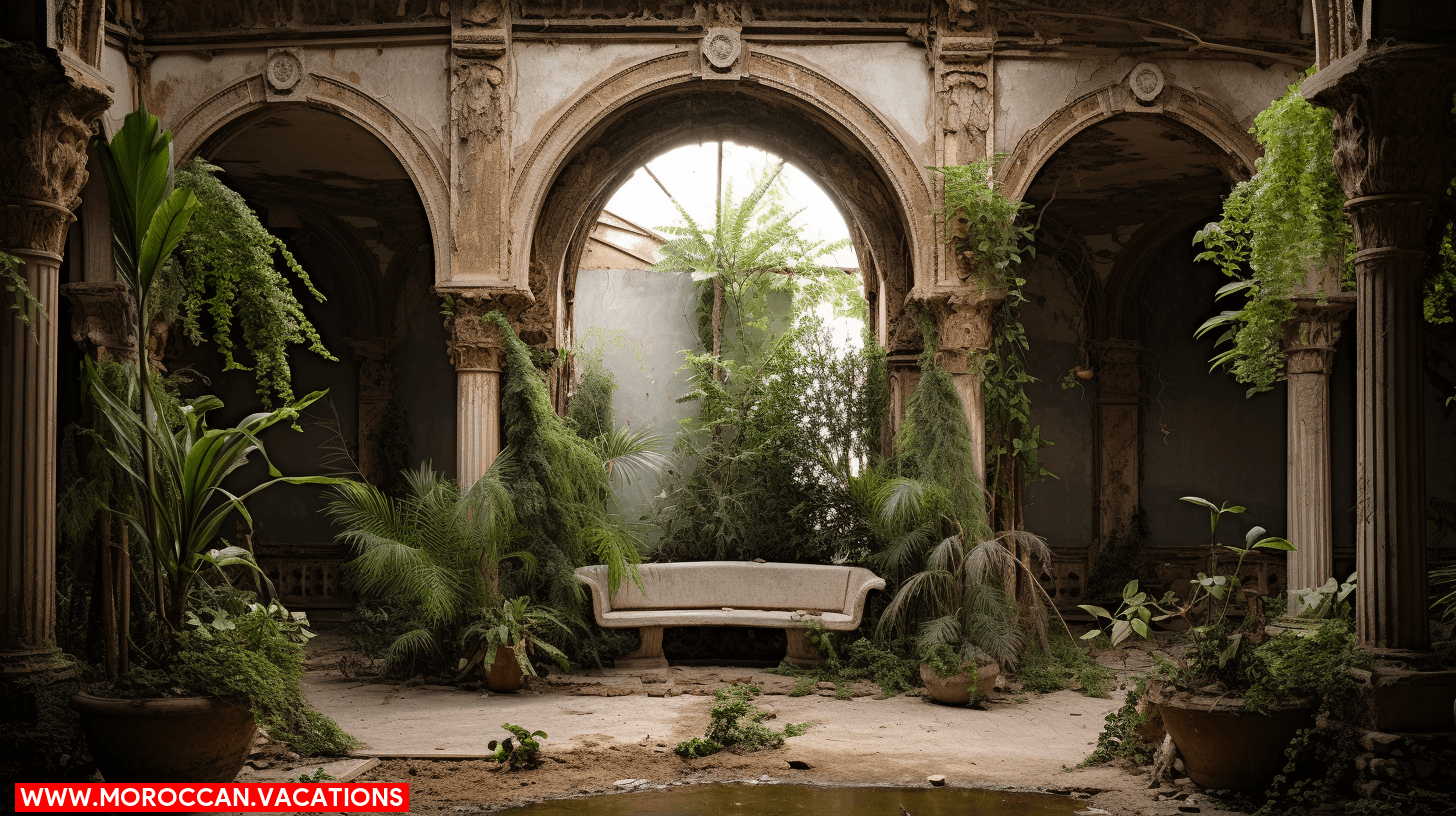

To continue the discussion on the transition of Marrakesh’s palaces to luxury hotels, let’s delve into the preservation efforts and restoration projects that have safeguarded the city’s historical and architectural treasures. Marrakesh is a city rich in history and culture, with palaces that date back centuries. However, preserving these palaces and their intricate details has not been without its challenges. Here are some of the efforts that have been made to protect and restore Marrakesh’s palaces:
- Conservation and Restoration: Preservation experts have worked tirelessly to restore the palaces to their former glory. They have used traditional techniques and materials to ensure the authenticity of the buildings.
- Partnerships with International Organizations: Marrakesh has collaborated with international organizations, such as UNESCO, to receive technical and financial support for restoration projects. These partnerships have helped to address preservation challenges and ensure the long-term sustainability of the palaces.
- Public-Private Partnerships: The government of Marrakesh has engaged in partnerships with private investors to fund restoration projects. This collaboration has not only provided the necessary funding but has also created cultural tourism opportunities for visitors to experience the beauty of these palaces.
- Education and Awareness: Marrakesh has prioritized educating the local community and raising awareness about the importance of preserving the city’s heritage. This has been done through workshops, seminars, and public campaigns, encouraging a sense of responsibility and pride in the city’s historical sites.
- Adaptive Reuse: In addition to restoration, some palaces have been repurposed into luxury hotels. This adaptive reuse approach allows for the preservation of the buildings while generating economic opportunities through cultural tourism.
Through these preservation efforts and restoration projects, Marrakesh has successfully safeguarded its palaces, overcoming challenges and creating cultural tourism opportunities for all to enjoy.
Amenities and Services for Luxury Travelers
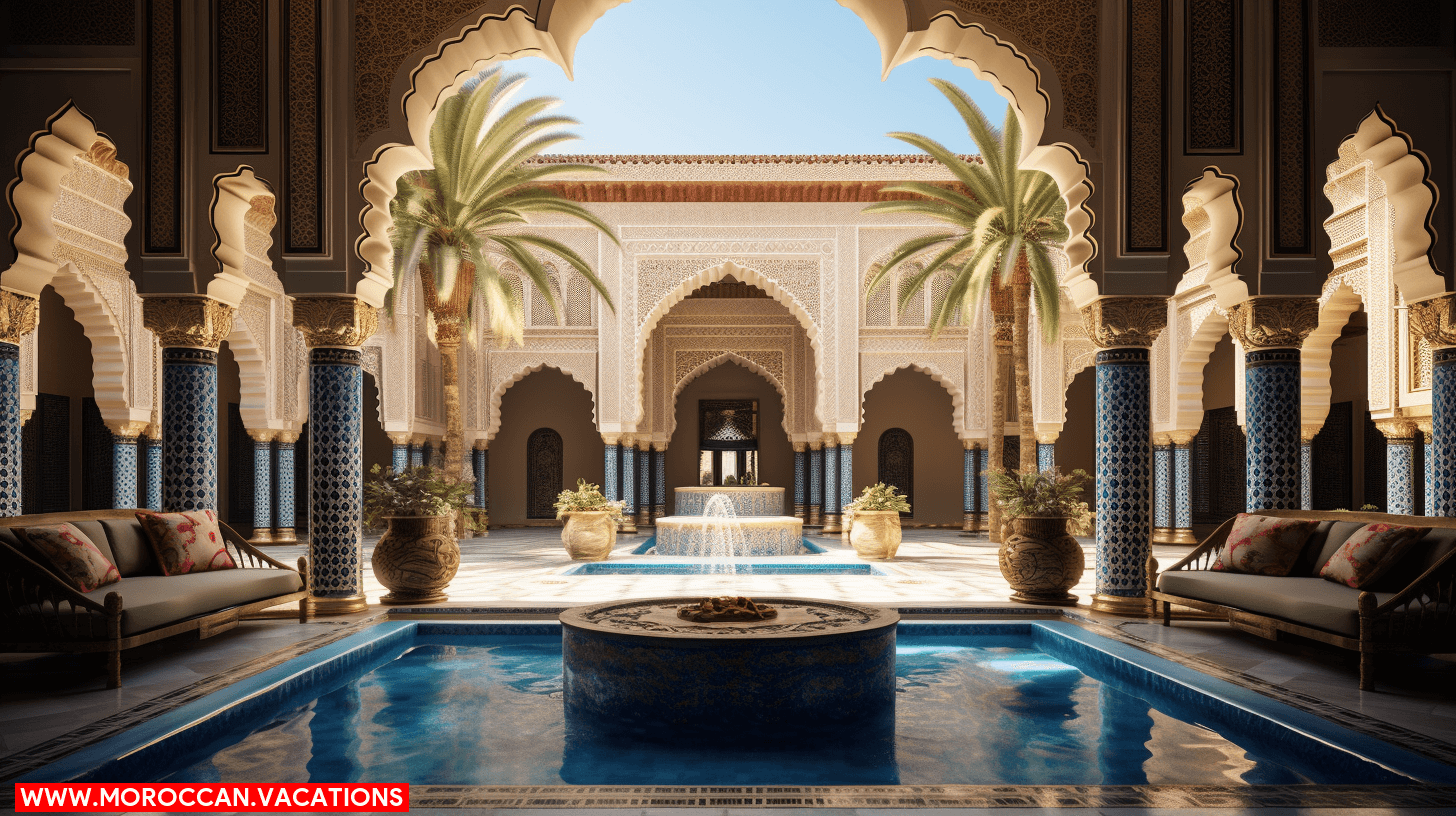

As a luxury traveler, you can expect a range of exclusive amenities and services when staying at Marrakesh’s transformed palaces. These palaces, which have been meticulously restored to their former glory, now offer personalized experiences and exclusive accommodations that cater to your every need.
First and foremost, the palaces provide luxurious guest rooms and suites, each uniquely designed to reflect the rich history and culture of Marrakesh. These accommodations boast opulent furnishings, lavish bathrooms, and breathtaking views of the city or the palaces’ serene gardens.
In addition to the exquisite accommodations, the palaces offer a variety of amenities to enhance your stay. You can indulge in spa treatments and wellness therapies inspired by ancient Moroccan traditions, allowing you to relax and rejuvenate in a truly luxurious setting. The palaces also boast world-class dining options, featuring a fusion of international and Moroccan cuisine prepared by renowned chefs.
To further elevate your experience, the palaces provide a host of personalized services. From private tours of Marrakesh’s historic sites to exclusive access to cultural events and festivals, every aspect of your stay can be tailored to your preferences.
Impact on the Tourism Industry
The impact of Marrakesh’s transformed palaces on the tourism industry is significant. The city’s palaces, once the homes of powerful dynasties, have now been converted into luxurious hotels that attract visitors from all over the world. This transformation has had several effects on the tourism industry in Marrakesh:
- Boost to the local economy: The conversion of palaces into luxury hotels has created new job opportunities for the locals, ranging from construction workers to hotel staff. This has resulted in increased income and economic growth for the city.
- Increased tourist arrivals: The luxurious and unique experience offered by these transformed palaces has attracted a new wave of tourists to Marrakesh. The city’s tourism industry has flourished as a result of this increased footfall.
- Preservation of cultural heritage: By transforming palaces into hotels, Marrakesh has effectively preserved its rich cultural heritage. Visitors can now experience the grandeur and opulence of the past while enjoying modern amenities.
- Sustainability initiatives: Many of these transformed palaces have implemented sustainability initiatives, such as using renewable energy sources and promoting eco-friendly practices. This has not only reduced the carbon footprint but also attracted environmentally conscious tourists.
- Diversification of tourism offerings: The transformation of palaces into luxury hotels has diversified the tourism offerings in Marrakesh. Visitors now have the option to stay in historic palaces, providing them with a unique and unforgettable experience.


Ayoub Karbachi
Lorem ipsum dolor sit amet, consectetur adipiscing elit, sed do eiusmod tempor incididunt ut labore et dolore magna aliqua. Ut enim ad minim veniam, quis nostrud exercitation ullamco laboris nisi ut aliquip ex ea commodo consequat. Duis aute irure dolor in reprehenderit in voluptate velit esse cillum dolore eu fugiat nulla pariatur. Excepteur sint occaecat cupidatat non proident, sunt in culpa qui officia deserunt mollit anim id est laborum.
Related Articles
The Splendor of Moroccan Zellige Tilework in Marrakesh's Architecture
A Rich History of Zellige Tilework Step into the world of Moroccan architecture and marvel at the splendor of Zellige tilework in Marrakesh. Immerse yourself in the rich history and artistry of this ancient craft as you explore the intricate geometric patterns and...
Marrakesh's Rooftop Gardens: Oasis of Tranquility Above the City
The History of Marrakesh's Rooftop Gardens Escape the bustling streets of Marrakesh and discover a hidden oasis above the city. Welcome to Marrakesh's rooftop gardens, where tranquility reigns and serenity awaits. These lush green spaces, tucked away amidst the...
Marrakesh's Architectural Treasures: Exploring the City's Palaces and Riads
Uncover Marrakesh’s architectural treasures with a journey through its palaces and riads. Explore the intricate designs, vibrant colors, and rich history of these iconic landmarks. Immerse yourself in the opulence of Moroccan architecture and experience the allure of Marrakesh’s cultural heritage.

